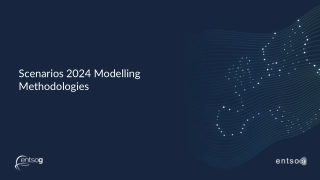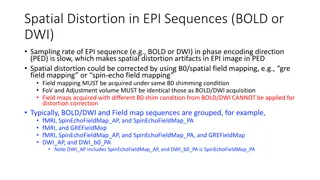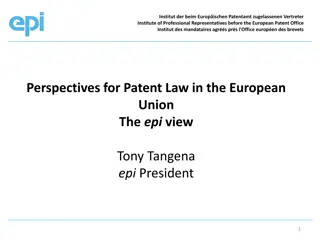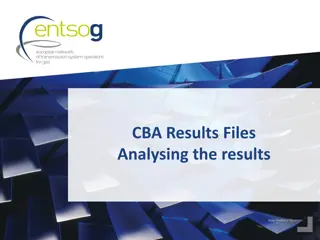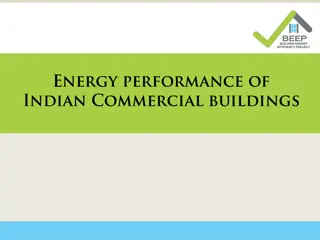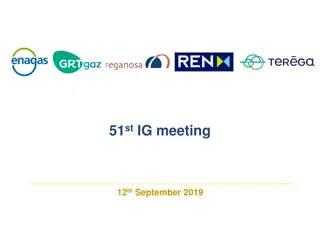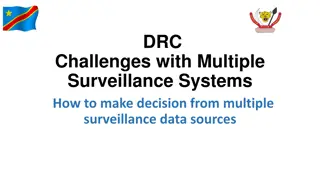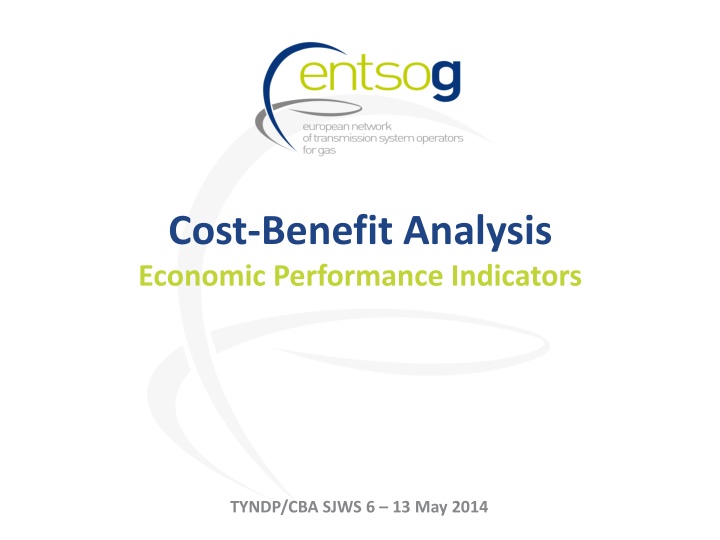
Economic Performance Indicators in Cost-Benefit Analysis: Insights and Guidance
Explore the significance of economic performance indicators in cost-benefit analysis, understanding the nuances of synthetic indicators, and the impact of assumptions on project ranking. Gain insights into interpreting results for regional groups and NRAs, with a methodology to inform decisions effectively.
Download Presentation

Please find below an Image/Link to download the presentation.
The content on the website is provided AS IS for your information and personal use only. It may not be sold, licensed, or shared on other websites without obtaining consent from the author. If you encounter any issues during the download, it is possible that the publisher has removed the file from their server.
You are allowed to download the files provided on this website for personal or commercial use, subject to the condition that they are used lawfully. All files are the property of their respective owners.
The content on the website is provided AS IS for your information and personal use only. It may not be sold, licensed, or shared on other websites without obtaining consent from the author.
E N D
Presentation Transcript
Cost-Benefit Analysis Economic Performance Indicators TYNDP/CBA SJWS 6 13 May 2014
Synthetic indicators Comparison of cost and benefits ?+???? ?? (?+?)? ? > Economic Net Present Value:???? = ?=? > Economic Internal Rate of Return: Discount rate producing a zero ENPV ?? ?+?? ?=? (?+?)? ? ?? (?+?)? ? > Economic Benefit/Cost ration: ??/? = ?+?? ?=? > Each indicator provides a different view of the project net economic impact Calculation > The Economic Benefit cash flow results from the monetization of project impact (as shown in previous presentation) > The Economic Cost cash flow results from the project cost (CAPEX and OPEX) > A Social Discount Rate of 4% is used to calculate the present value 2
but still not resulting in a project ranking Sensitivity to assumptions > Resulting in a single value, the indicators may give the impression they can be directly used to rank projects but they have the same link to assumptions as any other outputs from the methodology: Benefits are dependent from demand and supply assumptions Costs are dependent from CAPEX, OPEX and commissioning date accuracy > The firsts are mitigated through the scenario approach and the seconds by a sensitivity-study on project data > Therefore the PS-CBA step results in one value per indicator and case (around 5) plus the variation linked to project data Possible aggregation > The ENPV and EB/C ratios calculated at case level can from a mathematical point of view be easily aggregated but: Aggregation of cases will dilute project benefits Hide the link between results and input data 3
Guidance on the interpretation of results What Regional Groups and NRAs can get from the results > A high degree of comparability between projects (same methodology same data) > A good understanding of project impacts and when they could materialized > An idea of the robustness of benefits if they appear in a large range of cases > This knowledge can be obtained if result analysis is not limited to aggregated EPIs A methodology to inform not to decide > Readers of the ESW-CBA results will have a good understanding of the impact of each project but the methodology cannot forecast the occurence of coal, gas and CO2 prices nor the evolution of demand > Therefore decision-makers will need to have a political vision of the evolution of such parameters in order to select PCIs > Uncertainty about the materialization of conditions favorable to project benefits and competition between certain projects will mean that the backing of project by financial commitment from the market is the most robust way to move from the selection to the commissioning 5
Thank You for Your Attention Olivier Lebois Business Area Manager, System Development ENTSOG -- European Network of Transmission System Operators for Gas Avenue de Cortenbergh100, B-1000 Brussels olivier.Lebois@entsog.eu EML: WWW: www.entsog.eu

